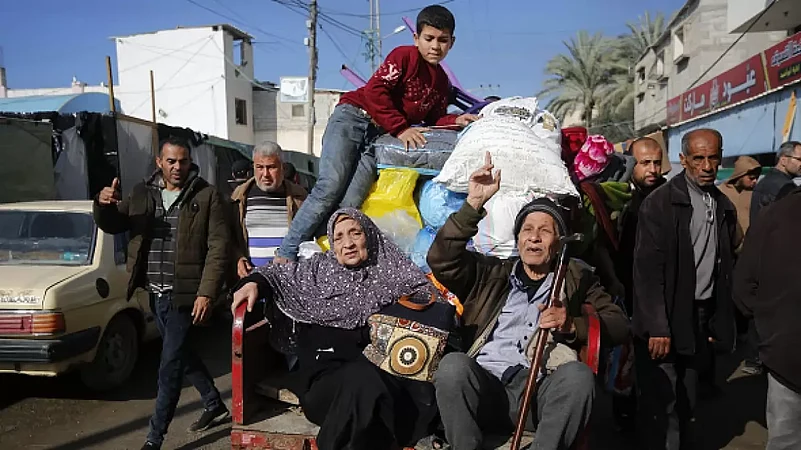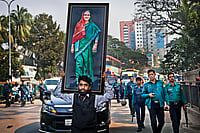Out of the West came cluster bombs
And they burst in a hundred shards
And every shard was a new bomb
And it burst again
Upon our men
Out of the West came a new bomb
And it sucked away the air
And it sucked at the heart
And it sucked at the soul
And it found a lot of children there
This is British poet James Fenton writing about the Vietnam War. The reference to children resonates with the plight of the children of Gaza today. The iconic Pulitzer-winning picture of a young girl fleeing her village after being torched by napalm provided by the US to the South Vietnamese Air Force brought home the horror of war. That picture tugged at the heartstrings. This was at a time when young people across the world, the flower children, spoke of love, not war. Many more wars followed. Today, similar gut-wrenching images are emerging from Gaza. Then, there is Ukraine. Earlier, it was Syria, Yemen, Libya, and Sudan. Not forgetting Iraq, Iran and Lebanon. Afghanistan has gone through decades of fighting. But the blood-letting has not stopped. World leaders turn a blind eye to the lessons of history. They refuse to learn as they look for their strategic interest. The cycle of death and destruction is repeated over and over again.
The US witnessed firsthand what happened with Washington’s penchant for regime change in Iraq. Saddam Hussain was killed but were Iraq’s problems over? No. The country was destroyed and roughly 200,000 civilians perished (NBC figures). ISIS, one of the most brutal terror groups, was born in Iraq amid the civil war. Terrorism spread through Europe. Iraq was hardly over when the Western leaders decided to take on Libya’s Muammar Gaddafi, once feted by the very same countries. NATO did not have boots on the ground, preferring to back anti-Gaddafi tribal factions. American and British forces fired over 110 Tomahawk cruise missiles to impose a naval blockade. There was relentless bombing by the French, British, and Canadian air forces on Libyan targets. Gaddafi’s government fell easily, but the killing of the dictator did not affect the condition of civilians in Libya. Libya has become a free-for-all all where groups armed run riot.
Sudan’s modern history has been one of perpetual internal war, initially between the north and south and now between the Sudanese Armed Forces headed by military chief Abdel Fattah al-Burhan and the paramilitary Rapid Support Forces under Hemedti. The fighting is concentrated around Khartoum, the capital city, and in the Darfur region. A report in October 2023 placed the dead between 9,000 to 10,000, apart from the displacement of around 5 million people. Another 1.5 million have fled the country.
A column on Libya and one on Sudan in Outlook's latest magazine issue will give readers a perspective of what is happening in these two African states. Most people care little about what is happening in faraway Africa.
And writing from Turkey, journalist Iftikhar Gilani gives the historical, religious, and cultural context of relations between Muslims and Jews. At one time in history, Muslims and Jews joined forces against Christians, and Jews served the Ottoman kings.



























